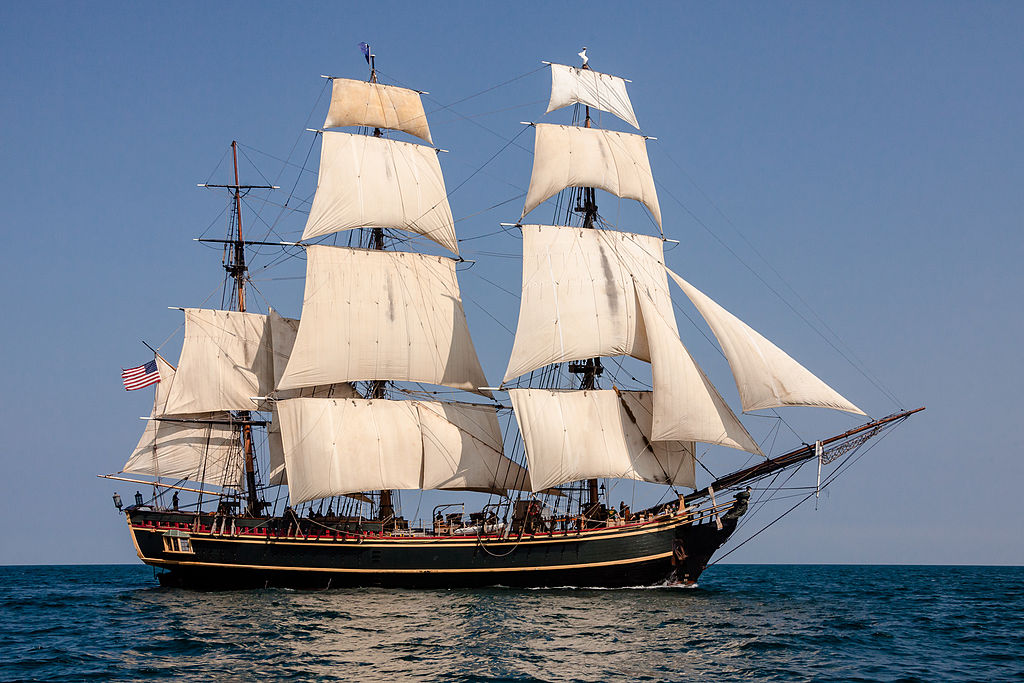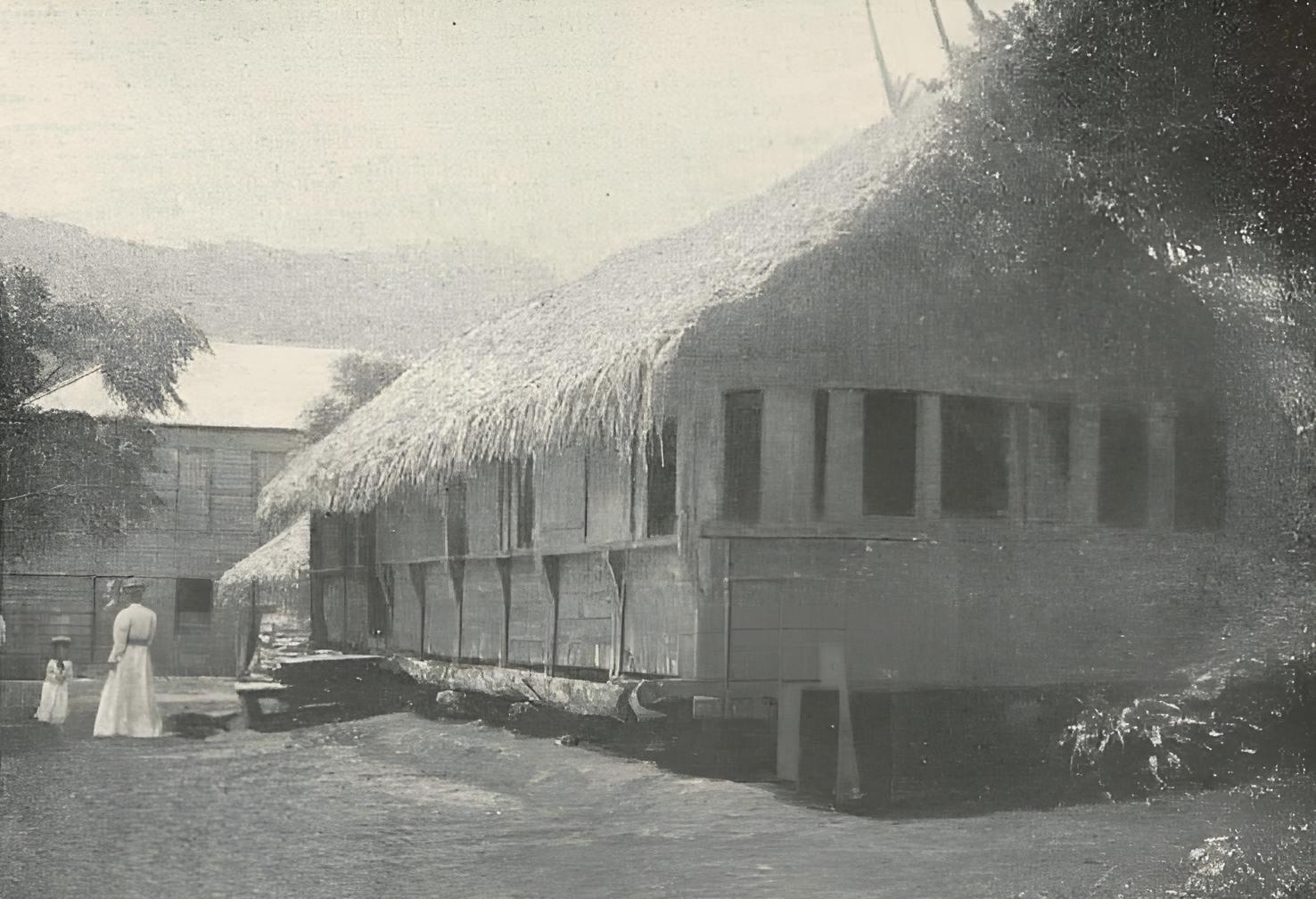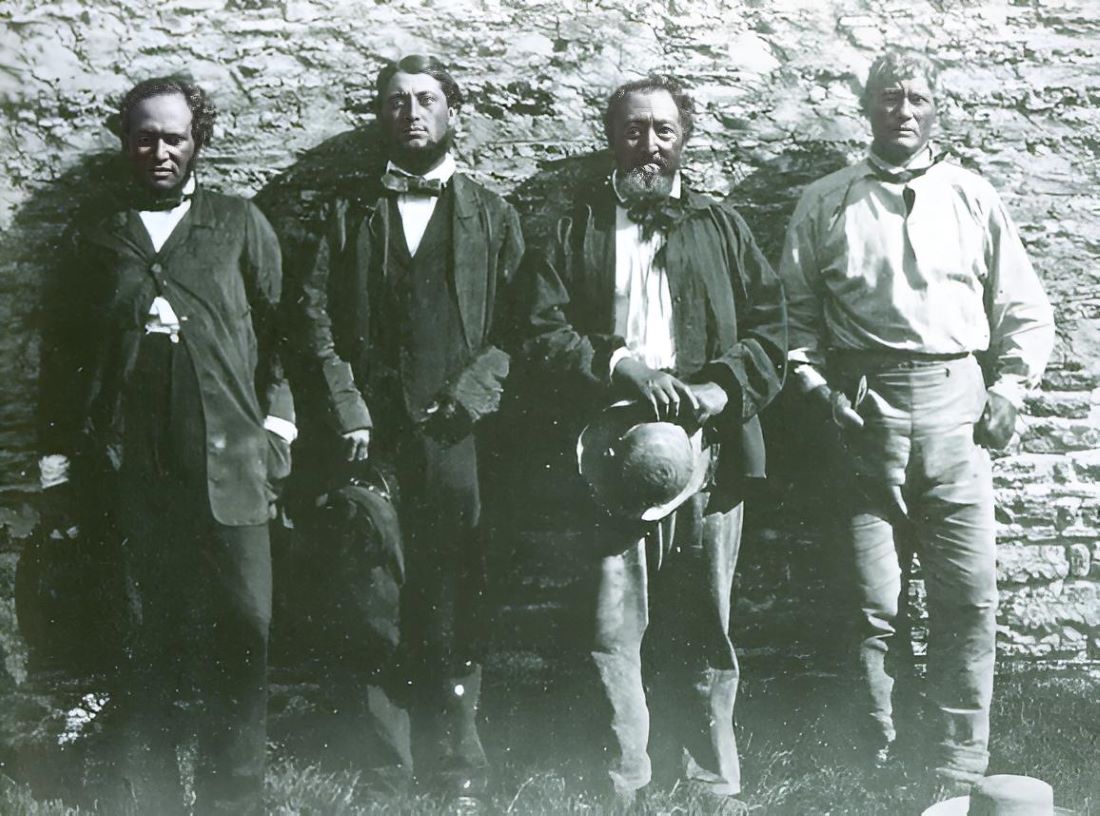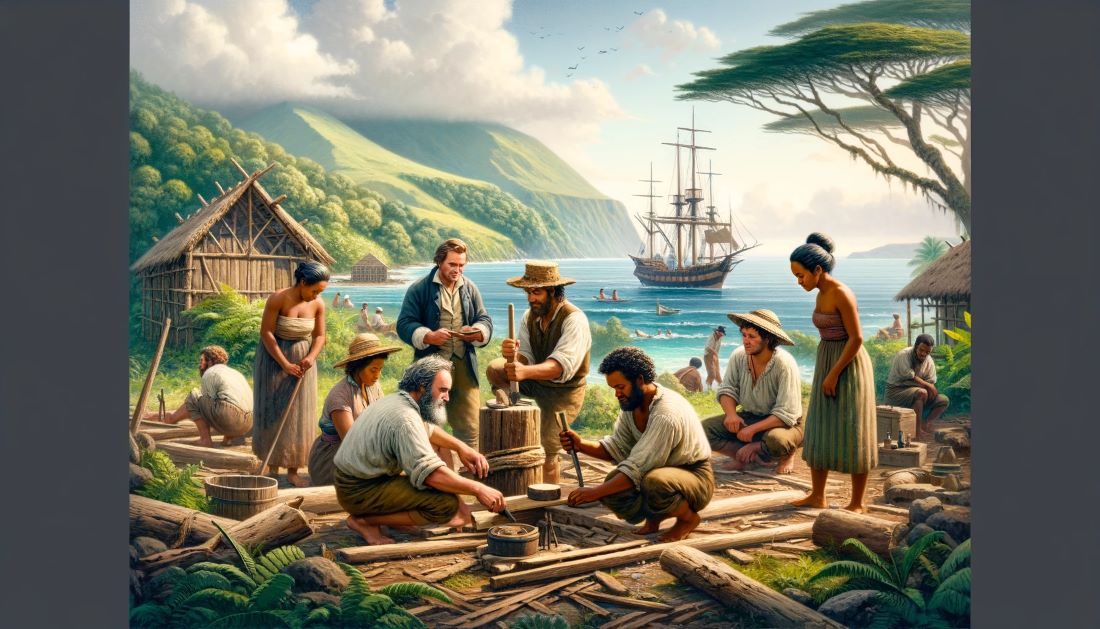Mutiny on the Bounty stands as one of the most infamous naval uprisings in history, extensively chronicled in numerous books, and scholarly articles, and vividly brought to life in film. The 1984 movie adaptation starring Mel Gibson and Anthony Hopkins is particularly renowned for its dramatic portrayal of this tumultuous event. However, in this blog, our central focus shifts from the mutiny itself to the aftermath faced by the mutineers. Specifically, we delve into the establishment of a colony on Pitcairn Island, a lesser-known but equally compelling chapter in the saga of the Bounty’s rebellious crew.
Mutiny on the Bounty
The mutiny on HMS Bounty occurred on April 28, 1789, led by Fletcher Christian, one of the ship’s officers. Within the Bounty’s crew of 44 members, growing unrest and dissatisfaction with Captain William Bligh culminated in a dramatic rebellion. The motives behind the mutiny were complex, encompassing harsh treatment by Bligh and the allure of the Tahitian lifestyle they had recently left behind.

During the mutiny, Captain Bligh and 18 of his loyalists were forcibly set adrift in the ship’s open launch, a small, overcrowded boat. This bold act of defiance left the mutineers in control of the Bounty. Remarkably, Bligh managed to navigate this tiny craft on a perilous 47-day voyage over 3,600 nautical miles to safety in Timor, displaying extraordinary seamanship and survival skills. Meanwhile, the mutineers faced the daunting task of deciding their next move, aware that they would be fugitives.
The Aftermath of the Mutiny
Following the takeover of the Bounty, the mutineers faced a critical decision about their next steps. A faction of the crew, still led by Fletcher Christian, chose to return to Tahiti – a place that had captivated many of them during their previous visit. This return was marked by a mix of relief and uncertainty, as they were well aware of the potential consequences if the British authorities caught up with them. On Tahiti, the mutineers found themselves at a crossroads, with differing desires and plans for the future leading to their eventual split.

Christian, along with eight other mutineers, six Tahitian men, and eleven women, decided not to stay on Tahiti, knowing it would be the first place the British would search. They set sail again in search of a safe haven, eventually discovering and settling on the remote and uninhabited Pitcairn Island in January 1790. This island, not accurately charted on British naval maps at the time, offered them a hideout. They stripped the Bounty of anything useful and burned the ship to avoid detection, effectively cutting themselves off from the rest of the world and starting a new, isolated community. This marked the beginning of a unique chapter in the history of the Bounty mutineers, one that would shape the legacy of Pitcairn Island.
Colony on Pitcairn Island
The mutineers who had remained on Tahiti were eventually captured and brought to trial, facing the consequences of their involvement in the mutiny. Meanwhile, on Pitcairn Island, a different story was unfolding. Fletcher Christian and his small group, along with the Tahitian men and women, some of whom were taken from Tahiti deceitfully, began the daunting task of establishing a new colony. They faced numerous challenges, including adapting to an unfamiliar environment and managing internal conflicts.

Fletcher Christian formed a relationship with a Tahitian woman named Isabella (Maimiti), with whom he had a son named Thursday October Christian. This personal aspect of Christian’s life on Pitcairn highlighted the intertwining of the mutineers with the Tahitian culture. However, the societal structure they attempted to establish was far from peaceful or sustainable. The tensions between the Tahitian men and the mutineers escalated. Tragically, Fletcher Christian was killed in 1793 during an uprising among the Tahitian men. These conflicts culminated in the deaths of most of the men, drastically altering the demographics and dynamics of the colony.
John Adams’ Leadership in Pitcairn
John Adams, one of the mutineers, stepping into the role of leader after Edward Young died in 1800, became the linchpin of the Pitcairn community. He was instrumental in guiding the nine Tahitian women and nineteen children towards a harmonious life. Adams harnessed the Bounty’s Bible to teach literacy and instill Christian values among the islanders, fostering a sense of peace and unity. This serene community was first encountered by the outside world in February 1808, when the American sealer Topaz, captained by Mayhew Folger, discovered the thriving settlement. Adams’ interaction with Captain Folger marked a pivotal point in Pitcairn’s history, as it reconnected the island with the rest of the world.

The Pitcairn community’s existence remained relatively unknown to the British authorities until 1810, and even then, it was initially overlooked due to the ongoing war with France. It wasn’t until 1814 that the British rediscovered Pitcairn, when HMS Briton and HMS Tagus, led by Captains Sir Thomas Staines and Philip Pipon, stumbled upon the island. They were greeted by Thursday October Christian, Fletcher Christian’s son, and George Young, the son of Edward Young. The captains noted the predominantly young population of 46 islanders, relying heavily on Adams for leadership. Their report back to the Admiralty painted a picture of a self-sufficient, peaceful community, leading the Admiralty to decide against any intervention.
The story of the Bounty mutineers and their settlement on Pitcairn Island is a remarkable tale of rebellion, survival, and adaptation. It highlights the complexities of human nature and the extraordinary lengths to which individuals will go to forge a new life, even in the most isolated corners of the world.
Historical Challenge: Can You Conquer the Past?
Answer more than 18 questions correctly, and you will win a copy of History Chronicles Magazine Vol 1! Take our interactive history quiz now and put your knowledge to the test!

